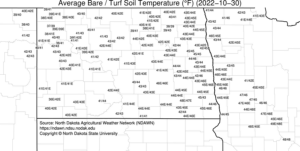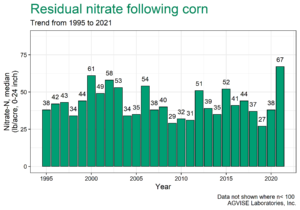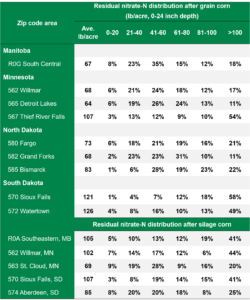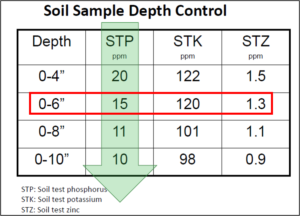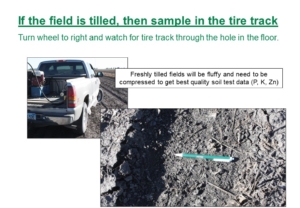Fall-applied Nitrogen Fertilizer: A Couple Simple Rules
The beginning to mid-October is when soil temperatures across the northern Great Plains and Canadian Prairies typically drop below 50 °F (10 °C). This is the soil temperature threshold that we wait to reach before applying fall-applied nitrogen fertilizer. It is important to wait until soil temperatures are cold enough (<50 °F) to help reduce the risk of soil nitrogen loss. Once nitrogen fertilizer is applied, soil microbes begin converting ammonium-nitrogen (NH4+) to nitrate-nitrogen (NO3–), a process called nitrification. In the nitrate form, nitrogen is vulnerable to loss through nitrate leaching or denitrification. The colder soil temperatures slow microbial activity, thus keeping more nitrogen in the safer ammonium-nitrogen form. This applies to any ammoniacal nitrogen fertilizer source, which includes anhydrous ammonia, urea, and ammonium sulfate.
Map courtesy of the North Dakota Agricultural Weather Network (NDAWN).
You can find an updated average bare soil temperature map here.
The 50 °F soil temperature rule of thumb is particularly important for soils prone to nitrogen loss: well-drained, coarse-textured soils are prone to nitrate leaching and poorly-drained, fine-textured soils are prone to denitrification. If such soils receive excess precipitation or become saturated (waterlogged) through fall or spring, soil nitrate can be lost through leaching or denitrification. In general, it might be better to apply nitrogen fertilizer on such soils in spring. But, if you must apply nitrogen fertilizer in the fall, make sure you wait until soil temperatures are cold enough to keep it in the ammonium-nitrogen form for a longer period of time to reduce potential soil nitrogen losses.
For fall-applied nitrogen, subsurface banding or incorporation is also important to prevent ammonia volatilization, another potential nitrogen loss mechanism. Fall precipitation (rain or snow) is too sporadic and unreliable to be considered an effective incorporation “strategy” for fall-applied nitrogen. Fall-applied urea should be banded below the soil surface (3 inches or deeper) or incorporated with tillage (at least 3-4 inches) to ensure complete coverage. Shallow fertilizer bands or shallow incorporation with vertical tillage does not provide enough soil coverage to prevent ammonia volatilization.
Fall-applied anhydrous ammonia should be banded 5 to 6 inches deep. Ensure that anhydrous ammonia trenches are sealing properly to prevent gaseous ammonia losses from the trench. In addition, the nitrification inhibitor nitrapyrin (brand name N-Serve) can be added to anhydrous ammonia to delay nitrification, offering additional insurance to keep nitrogen in the safer ammonium-nitrogen form for longer. However, please note that its efficacy decreases with warmer soil temperatures, so it is no replacement for cool soil temperatures (<50 °F).
In conclusion, fall-applied nitrogen is a great way to allocate time and labor resources, leaving one less thing to do in the spring. But, you must be smart and consider fertilizer source, timing, and placement options to make sure that the nitrogen applied in fall will still be there next spring.

